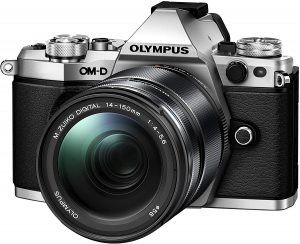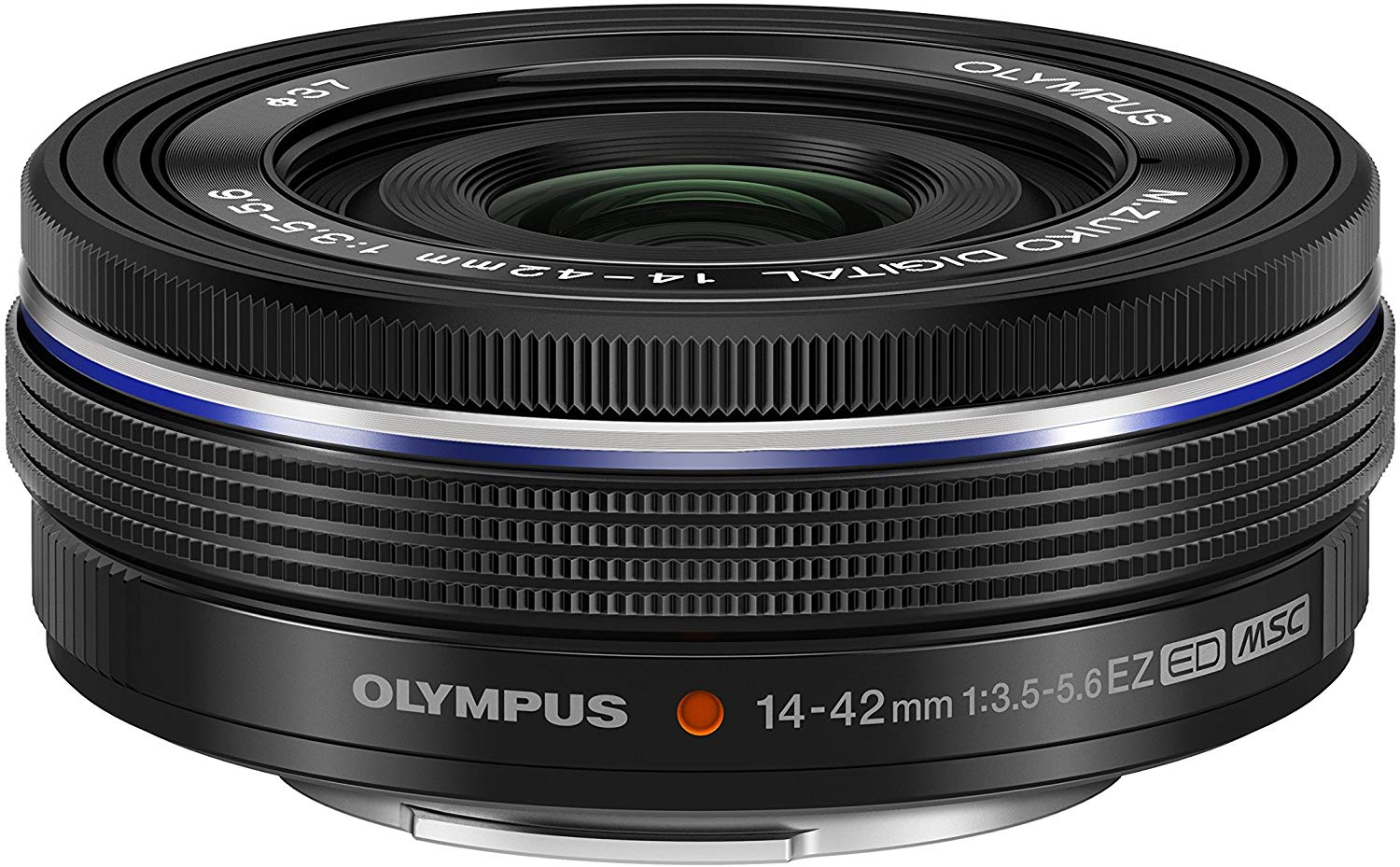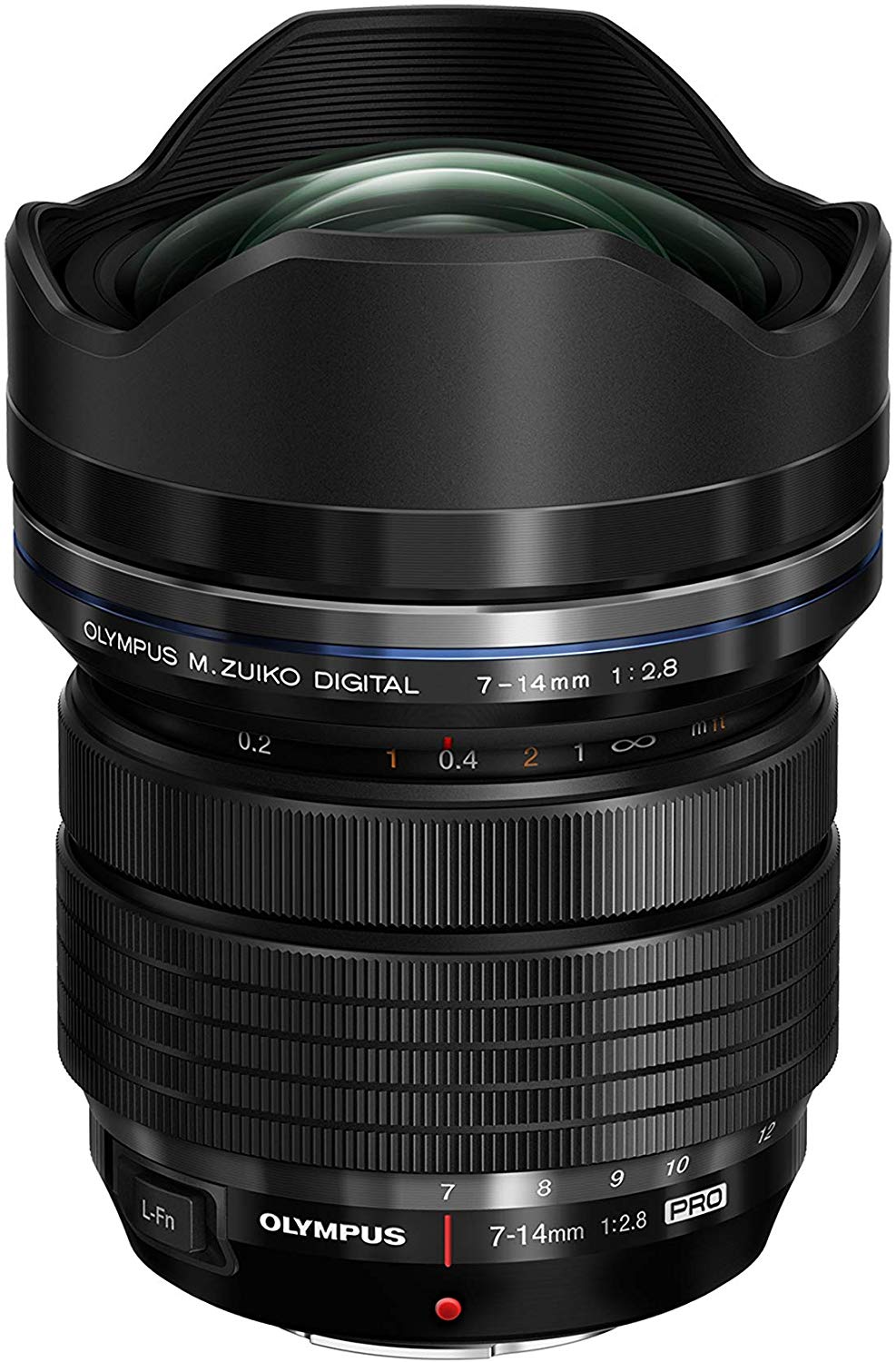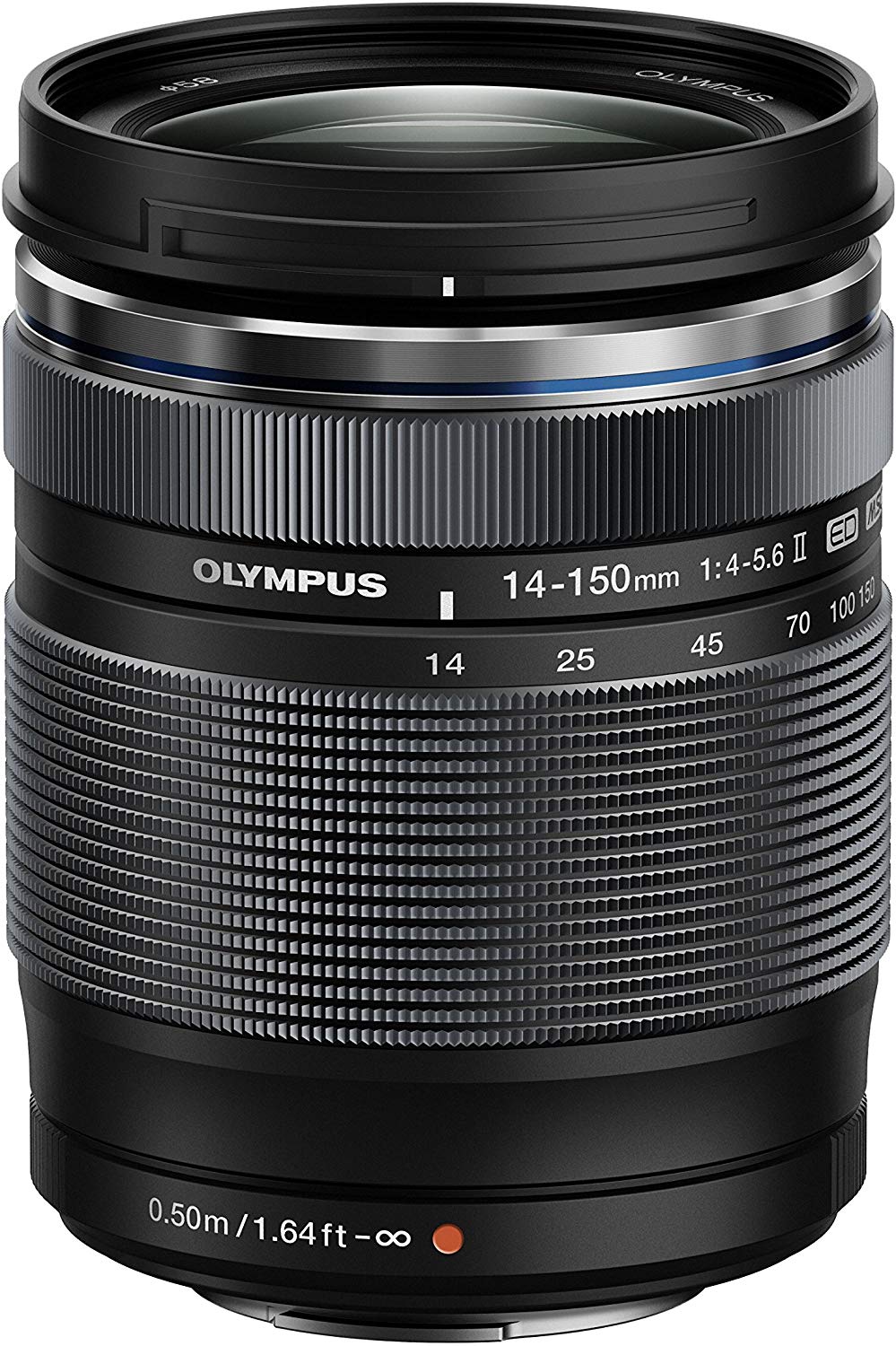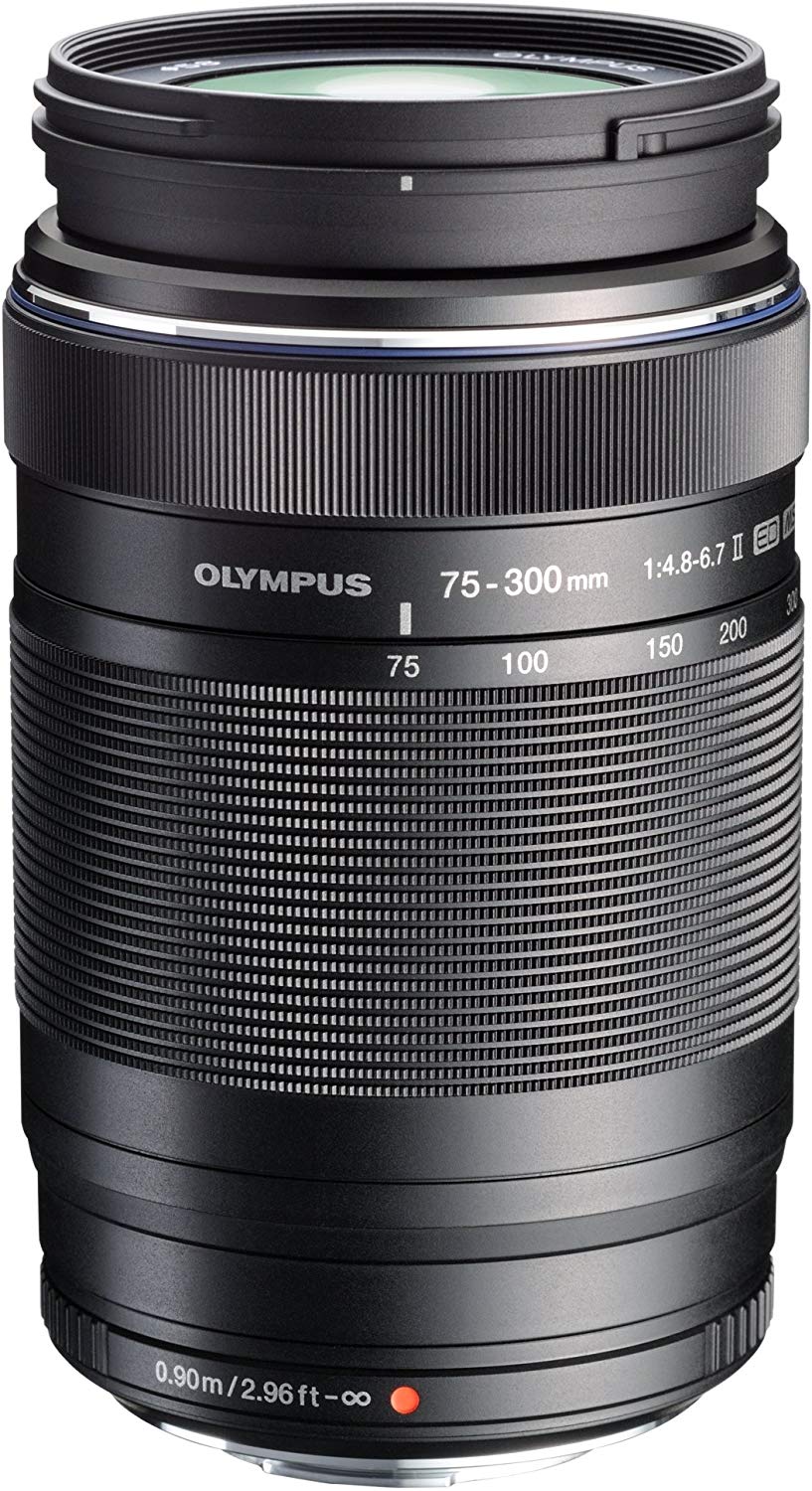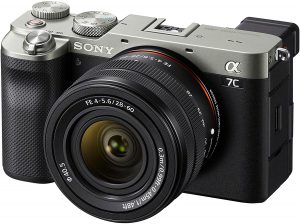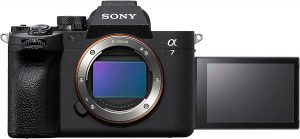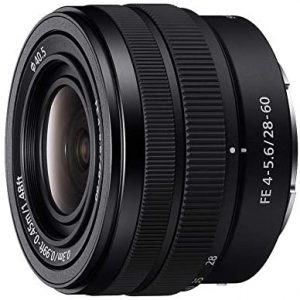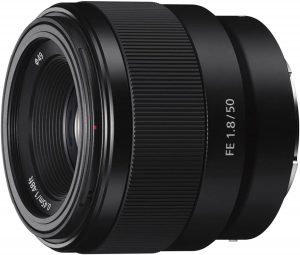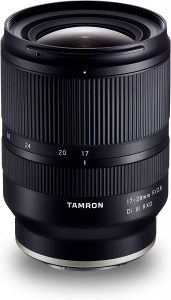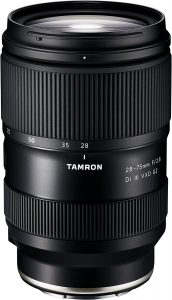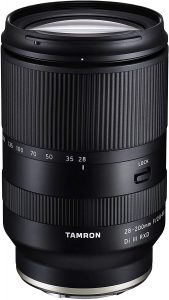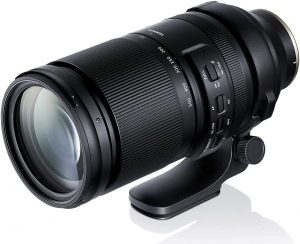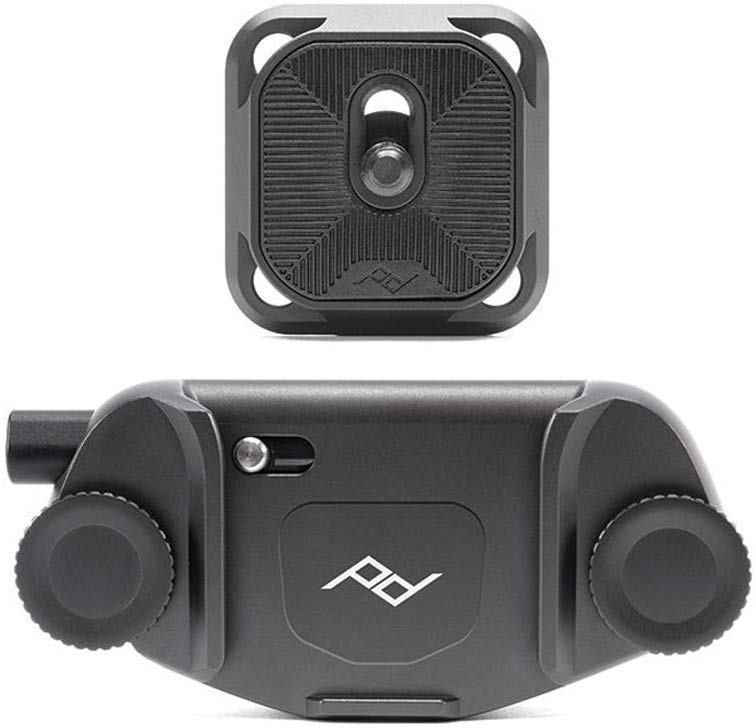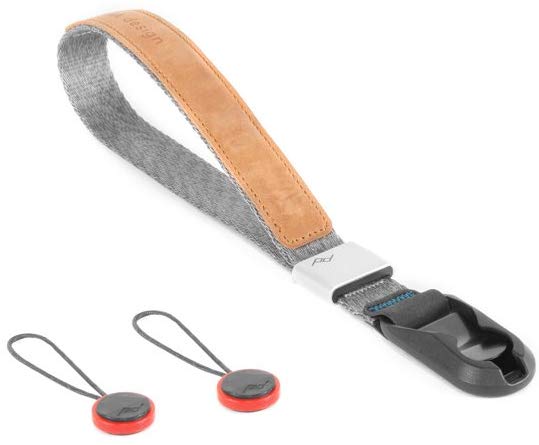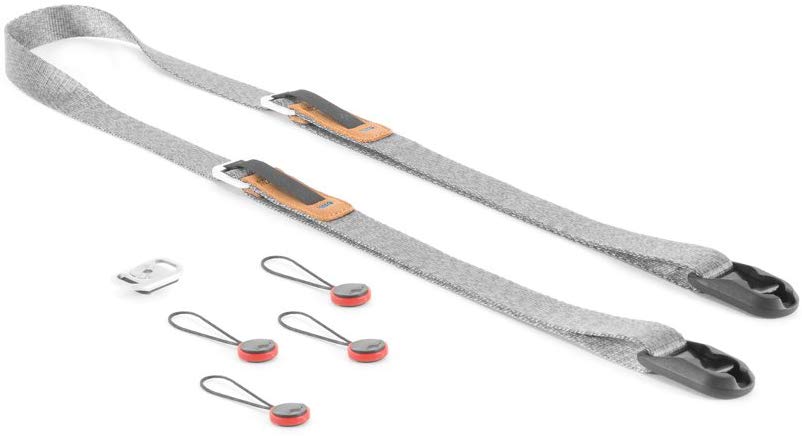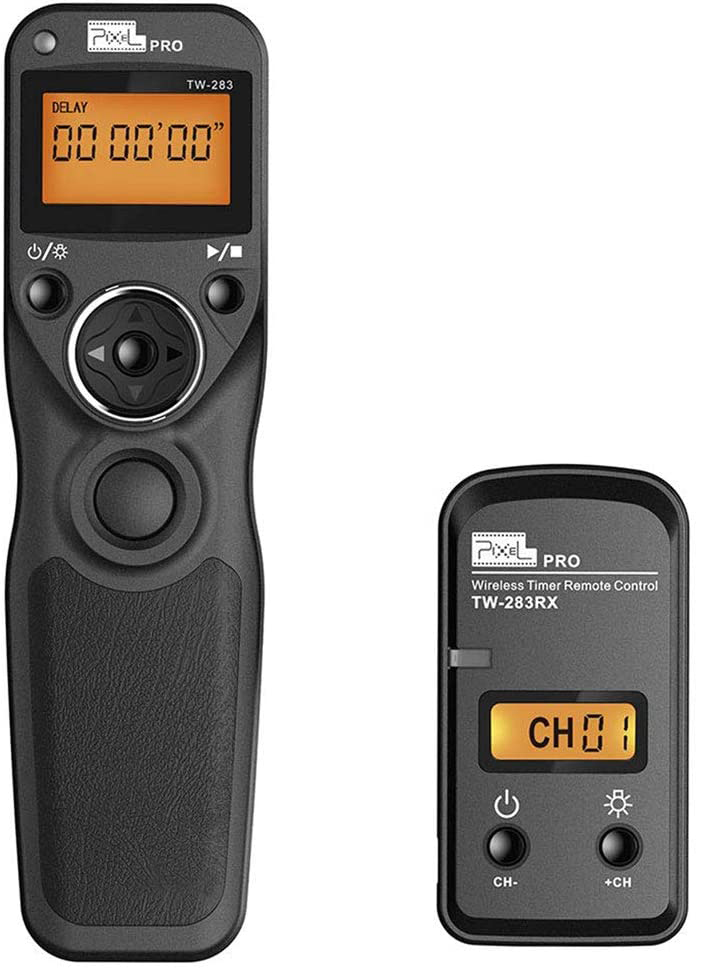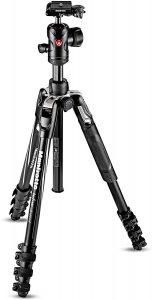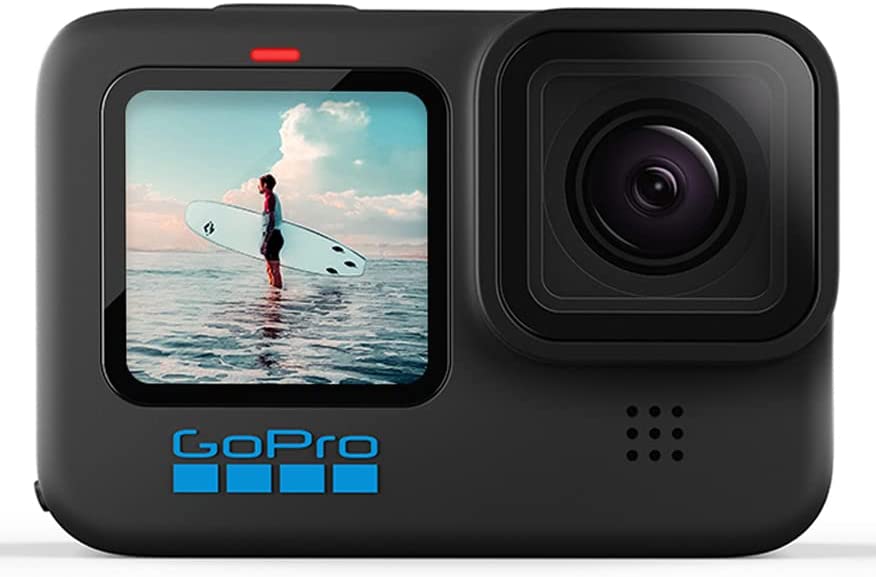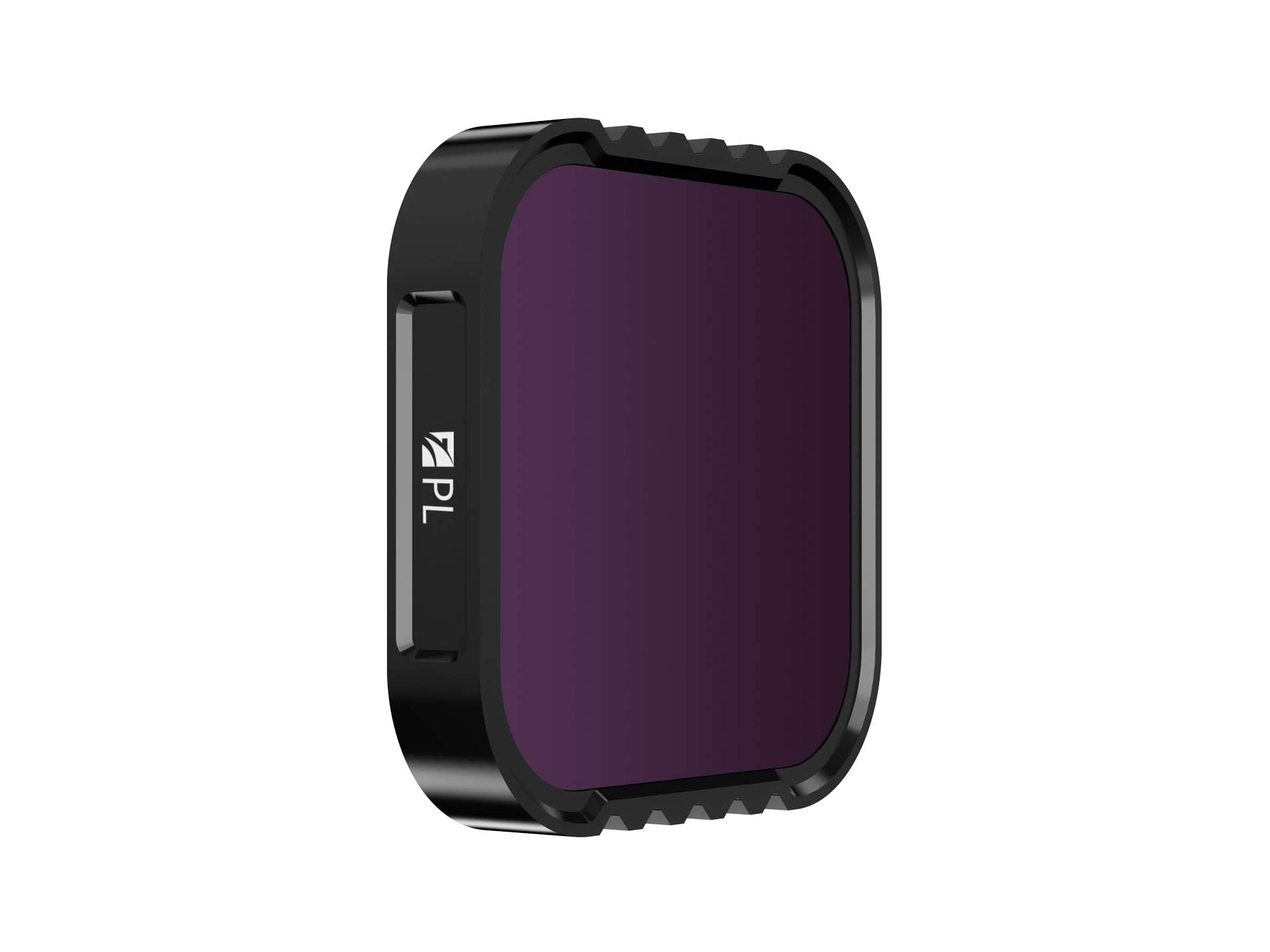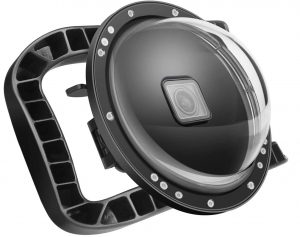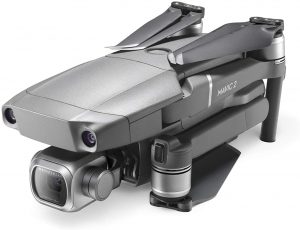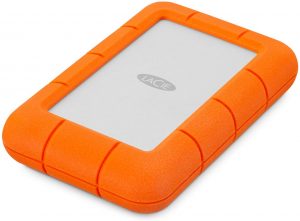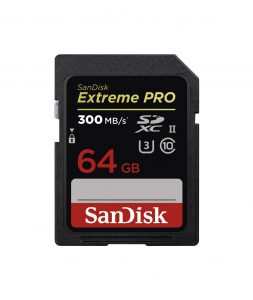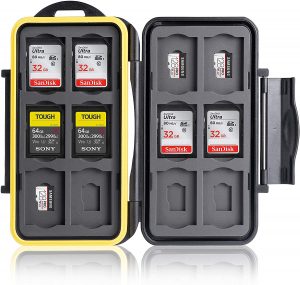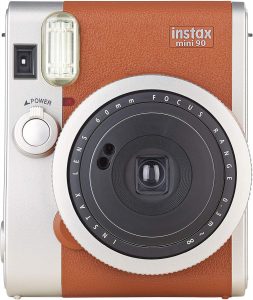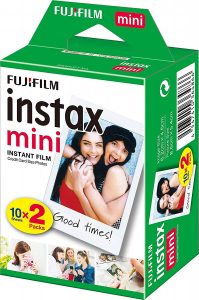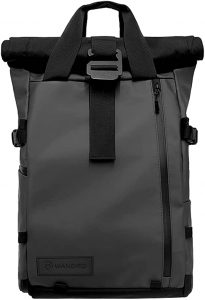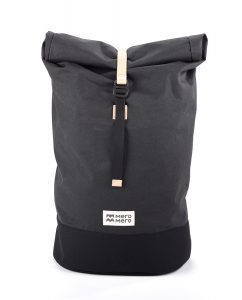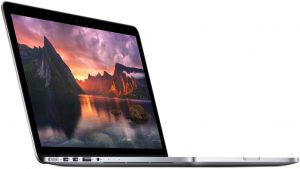We are often asked what photo and video equipment we use. We thought it was high time to give you a little summary on this subject.
Since our departure in June 2015, our camera bag has taken on a bit of volume. We left with only our camera, an all-purpose lens and a device capable of going underwater. Our equipment has since evolved, even if the basics remain the same.
And yes, over time we have defined our real needs in relation to the subjects that interest us and our way of approaching photography.
As you know, Popo is a small van so we have often favored compactness, modularity or even the multifunction side of certain accessories when possible!
Let's start with the basics: the camera. This one we used between 2015 and 2022, a box Olympus OM-D E-M5 MkII (ouch that's long). It is a hybrid device with a Micro 4/3 sensor (format shared with Panasonic), very compact and equipped with truly exceptional 5-axis stabilization. It was the best-rated hybrid when it was released, especially for this last point. What we liked about it, apart from its little retro look which by the way is really successful, is its size, its tropicalization (it is resistant to splashes and rain), its resistance to extreme temperatures and its resistance to shocks. A real little adventurer perfect for traveling in all circumstances!
Olympus was released in October 2019 the new model: the MkIII, which has evolved well, especially in the video part with the arrival of 4K and a whole host of improvements.
The E-M5 is the brand's mid-range, it is between the E-M10 MkIV (the entry level) and the E-M1 MkIII (the pro model). Recently another model appeared, the E-M1X even more upscale, but here we pass on another dimension of much larger case.
In short, we liked our little Olympus hybrid but for the sake of professionalization, we needed a second limp (and yes we are both behind the cameras), with a full frame sensor and more versatile in photo / video (see A little lower).
In addition, we use the removable Olympus handle specially designed for our model. It allows, among other things, to have a better grip when you install a big lens or even, in winter when you have gloves.
To protect our device we use a USA Gear cover in Neoprene.
Who says hybrid case, says interchangeable lens. Obviously it's better to have at least one to take pictures!
For a year and a half we used the lens sold in a pack with the camera, it's a Olympus 14-150mm (equivalent 28-300mm since we do X2 with a Micro4/3 camera), therefore very versatile in terms of zoom and with an aperture of f4-5.6. Which is not huge, far from the Pro models of the Olympus range but which allows you to really have fun if the light is not too weak. It is really compact for such a zoom and tropicalized. This is the lens that is 80% of the time on our camera as it goes everywhere!
We immediately bought in addition, a small lens Olympus 14-42mm “Pancake” (28-84mm equivalent). Why Pancake? Because it really is flat! So even if in terms of its focal length (its zoom), it duplicates the 14-150mm, its usefulness lies in its compactness. You can literally put the camera in your pocket when this lens is attached. We use it in town, when we want to be discreet wherever we go for a walk and when we don't want to get too cluttered. Its quality is not exceptional but it does its job very well.
After two years, we invested (yes that's the right word), in a wide angle of the range Olympus Pro: the 7-14mm (14-28mm equivalent), F2.8. A true tropicalized racing beast, with an all-metal construction and a disengageable manual focusing ring with stopper. Perfect for large landscapes and low-light photos. We use it among other things for all our night photos!
In California, we had the opportunity to buy an exhibition model at a very low price (a few hundred euros). The occasion was too good and a small Panasonic 25mm fixed focus (50mm equivalent) F1.7 has therefore joined the family (remember that it shares the same format with Olympus). It is compact, with a very large aperture, we particularly like it for bright portraits. On the other hand, it is not tropicalized at this price of course...
And finally the last of the bunch, bought second-hand very recently in the summer of 2019 just before going to Alaska: a telephoto lens Olympus 75-300mm (150-600mm equivalent) f4.8-6.7. It's not top of the range, far from it, there's no tropicalization, it's not made of metal like those in the Pro range, but it does the job it's asked to do, zoom in for be closer to nature without disturbing it!
To keep all these beautiful people warm, well above all safe from blows and dust, we ordered a lens cover pack, there are for all sizes and different colors.
Filters now. We use Hoya brand filters (very well known in the world of optics) and Gobe filters. Why these two brands?! Because the products have a great price/quality ratio. The ring is made of metal, the optical quality is very good, the resistance of the treatments is too, and if it is damaged we will not have too many regrets at this price. We therefore use on each lens (apart from the wide angle which cannot receive one) a UV filter which above all serves as protection. We also use a polarized filter in particular to remove reflections on the water, on the road or on the windshield. And finally some ND filters for long exposures and a Variable ND especially for video.
In the family since summer 2021: a Sony A7C. It is a hybrid device with a full-frame sensor, but which remains very compact (hence the name “C”) and always stabilized and tropicalized. Small but strong, the A7C is the most compact full-frame camera in its category and therefore necessarily in the Alpha series. Ideal when you want a full size for travel!
Last arrived in our backpack, the Sony A7IV who joined us in 2022. Ultra versatile camera, excellent for both photos and videos and equipped with super stabilization, it is a camera that wants to be very (very) good whatever the conditions! To fully understand the Alpha 7 range and without going into details here, its cousin the A7RV (“R” for resolution) is intended for photo use while the A7SIII (“S” for sensitivity) is it, for a more video use. The functions change, the number of megapixels and the sensitivity too, in short, everyone has their own device according to their needs!
To protect this, we use a USA Gear cover in Neoprene but the size above that of the Olympus of course.
Who says different brand device, and especially with a sensor of different size, necessarily says different lenses…
We took the Sony A7C as a kit with the very good FE 28-60 F/4-5.6 which goes really well with the latter. Compact and versatile, it scores highly on all tests for a kit lens (which aren't usually great). The price difference between the bare body and the kit is worth it if you need this focal length. The image quality is quite good without being exceptional, it is not a lens from the Sony GM range (the brand's ultra high-end).
As another lens we wanted to start with a good all purpose lens and that's naturally towards the Tamron 28-200mm F/2.8-5.6 that we oriented, a real Swiss army knife! An impressive zoom in a compact format and an aperture of F/2.8 at 28mm. In short, it has no equivalent and even if it means having one or two lenses, you might as well have it in your backpack, it is good in all conditions and has internal stabilization.
Tamron has chosen to make lenses that are compact, light, tropicalized (for the most part), stabilized (for zooms) and of excellent quality, all for a reasonable price. For our travel / nomadic use, it is therefore ideal and it is quite naturally in their range that we have completed our fleet of full-frame lenses. Small bonus all their lenses (except the enormous 150-500mm) have the same diameter of 67mm, which allows to have only one set of filters!
In wide angle it is therefore the Tamron 17-28mm F/2.8 which takes its place in our backpack. A little less wide angle than the Olympus therefore (you have to make a ratio of x2 to compare), but more than enough in the vast majority of cases whether for landscape or architectural photography.
In order to have a constant opening (compared to the 28-200mm F/2.8-5.6 whose aperture varies from F/2.8 at 28mm up to F/5.6 at 200mm and which we saw a little higher), it is the Tamron 28-75mm F/2.8 which becomes our main objective on one of the two devices. For those who want a constant aperture, this is really the basic objective to have. The zoom is sufficient in most cases but if you want to go further while keeping an aperture of F/2.8 you have to complete it with the Tamron 70-180mm. Thus we obtain almost the same range of focal lengths as with the 28-200mm but therefore with a fixed aperture.
As we needed a big telephoto lens and always with a concern for compactness, the Tamron 150-500mm F/5-6.7 has literally enlarged the family. It's a big 1.9kg baby that's not that heavy for what it actually is, compared to other Sony or Sigma lenses at this focal length. So of course, you have to use it, it's not for everyone, but for wildlife or sports photography while traveling it's ideal.
In short, with the Tamron range we cover all focal lengths from 17mm to 500mm and everything fits in a single backpack!
Finally, and in order to have a fixed focal length this time, we wanted to test (without breaking the bank) the small Sony 50mm F/1.8. A really interesting choice for portraiture in particular. With a price of around €200, it allows you to have a lot of fun with an image quality that is more than adequate for an entry-level! Be careful though, for this price it is not tropicalized.
Again over time, we have upgraded our equipment and taken some really useful accessories that we use every day.
The, or rather the straps: initially we used the Olympus strap delivered with the device, nothing special, it's a neck strap. But we realized that we often kept the device in hand. And we discovered the Peak Design range. The system is quite simple. These are in fact small clips which attach to the rings of the device and which allow you to clip different straps. We generally use the wrist strap but we also have the neck strap. It's very practical and very very resistant, it can be removed with one hand, really the perfect strap combo in our opinion.
At Peak Design again, we use the Capture Support, which is a clip (again) but this time for the camera! One part is placed on the strap of a backpack or belt and the other is fixed on the thread under the device. You can then have your hands completely free while hiking and quickly draw the device if necessary. One of our favorite accessories without hesitation… And where they really stood out was that the system is also compatible with tripods from major brands since the plate is also Arca-Swiss.
The remote control: we did not take the Olympus remote control for several reasons. Already, one, it is wired, two, it is expensive, and three, it is not multifunctional. So we found a universal remote control which comes with the cable that corresponds to the brand of the box. It is wireless, multifunctional and inexpensive. Even if it is a little “plastic”, it works very well and from very far away, we don't ask for more.
At the level of the tripod, once is not custom we opted for compactness. We therefore chose a BeFree Manfrotto which is very light and compact, perfect for traveling! It also exists in carbon version, even lighter, for those who have the budget. It is very stable even in high winds, has several positions and the Manfrotto quality is no longer to be debated...
When it comes to having something even smaller and that hangs everywhere, we take out our little JOBY GorillaPod. There are several sizes depending on the type of camera (size and weight), we have the 3Kg hybrid model which is perfect for our two cameras even with a large lens.
For underwater shots or when practicing certain sports, we now shoot with a GoPro HERO10 Black. (We went from the GoPro 1, to 5, to 10… we let you imagine the difference in image quality and stabilization between the models…). It also serves as our “dash cam”, understand that it is often fixed behind our windshield to film the road. There GoPro HERO10 Black has incredible stabilization, no need for a stabilizer! Since the version 11 came out, still and always more advanced (it will never end...).
For the accessories, we decided not to put too much budget in there, by taking a third-party accessory pack. There's everything you need for all activities for the price of a single GoPro accessory. So the quality may not be the same, ok, but it's enough for our use and since time we haven't had a problem.
The filter: to reduce reflections on the windshield when using the GoPro as a dash cam or reflections on the water, we install a Freewell polarized filter
The dome : That's a really great accessory but it takes up a bit of space in our little van… It allows us to take pictures at the level of the water line. On the picture or the video we can see both under and out of the water, magic!
We waited a long time before breaking the bank for a drone, but what a pleasure! Climbing up to vary the viewpoints is really pleasant. Our choice fell (once again) for a compact model, easy to carry in a backpack and which does not take up too much space in our van thanks to its folding arms: a DJI Mavic Pro 2 (after having a Mavic Pro Platinum). We had taken advantage of an introductory offer in the USA which made it the best choice. It is really small, even if it exists even smaller, like the DJI Mini 3 Pro, where the DJI Air 2S. Each model has its advantages and disadvantages, they must be compared to each other according to the needs. Since our purchase DJI put on sale the Mavic 3 which puts a new slap on the old model with its dual Haselbad on-board camera: wide angle + zoom, but more expensive. But since and for whom the dual camera is not useful, the Mavic 3 Classic took over.
We have some inexpensive but very useful accessories like covers specially designed to accommodate the drone and the remote control or Kevlar pockets for battery storage. These pouches are mandatory if you want to fly with your drone. Some companies will refuse to ship it without it.
We also use ND and PolarPro filters for videos.
Pay attention to the rules of use and the specific regulations in each country, find out!
Yes, there are “s” at the end of each word. You can imagine that since the summer of 2015 we have taken some photos and videos... For the hard drives, we trust the model Rugged by Lacie. They are supposed to resist shocks and are therefore perfect for our nomadic use. There are also models in the same range with SSD disks which are not at all affected by shocks like a classic mechanical hard disk, but they are of course more expensive.
For SD cards, only cards are used SanDisk Extreme Pro. Classic DS and SD microphones for the drone and the GoPro. It's been years and we've never had a problem with it. We once bought a card from another brand (the classic trick… you leave with your device forgetting the SD card in the computer reader… great), and we only use it as a last resort because we have had errors a few times… Also pay attention to the writing speed, which must be high when using equipment that films in 4K, for example. Recently we bought a Sandisk Extreme Pro SD card with 300Mbps write speed and the difference is obvious! Even in the photo! Where, for example, a night photo with a 30-second break takes 30 seconds to process behind, with this card processing is instant! We save a lot of time and at night in winter believe us it makes all the difference!
SD card storage: too often neglected, SD cards are easily lost as they are small and they can also fear the elements. For that, we keep them dry in a waterproof case. This also allows us to organize them, on the left the blank cards, on the right those which must be unloaded on the hard disk with the MicroSD adapters.
That's our little personal pleasure, an instant camera that develops photos in minutes. Basically, we are rather fans of Polaroids, but faced with the difficulty of finding films while traveling, their price and the handling when the film is released (the new Impossible films require putting the photo directly in the dark while it turns out), we fell back on a device Fujifilm's Instax Mini 90 Neo Classic. (unfortunately almost impossible to find now, the brand has since released other models). The format is smaller but we find movies really everywhere, even in the supermarket and their price is right. The quality is regular and frankly we do not regret! We created ourselves a small album just for us with our best memories. The idea is also to be able to give a little souvenir directly to the people you meet on the road. It's always fun and it's rather original!
To take all this with us, we use a camera bag. Our choice fell on the Wandrd Prvke 31L backpack. (no there is no fault..). For what ? Because it's not too big, not too small (there are three sizes: 21L / 31L / 41L), that all our equipment fits inside (yes, all that), that it doesn't really a camera bag look (top when traveling), access is via the back, and the must: it's waterproof. Basically the lower part is planned to receive the photo equipment and the upper part of the business. The bag is modular since the two compartments can form one and the upper part can be adapted to the volume of the case. Straps can also be attached here and there for a tripod for example. Other internal and external modules can be added as an option depending on everyone's needs. There's even a pocket for a computer and tablet and plenty of other little pockets for accessories! It is without equal in the world of photography.
We often also use our MeroMero Squamish backpack. So even if this one is not a camera bag strictly speaking, it comes with a photo pocket that fits perfectly at the bottom of the bag and keeps our equipment safe from blows. Smaller, more versatile, more discreet and very light, it's our everyday backpack. When we don't have all our equipment to lug around but only our camera with one or two lenses, this is the one we choose. He never leaves us.
For the processing of our images we use the MacBookPro 15″ that we had before leaving when we were still practicing our architectural activity. They are a few years old but they hold up well despite everything, so why change them?!
Above we mainly use Lightroom for processing our images and Final Cut Pro for Video. We also have the rest of the Adobe suite that we use for different projects.
The links on this page are affiliate links. It doesn't change anything for you, the price stays the same!
